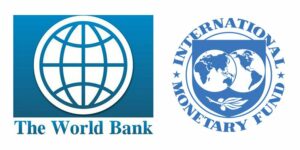Thursday, April 18, 2019
The HINDU Notes – 18th April 2019
VisionIAS
15:35

📰 The limits of populism
It is very difficult for an incumbent government to offer biographical solutions to structural problems
•Democracy and populism are cousins. A charismatic leader mesmerises the electorate, strikes an emotional chord and blurs the distinction between the leader and the led. However, a charismatic-popular-populist pitch doesn’t automatically transcend into populism. It requires demagoguery wherein hitherto suppressed but popular desires get articulated by a mesmeriser who emerges as the saviour. Both Mahatma Gandhi and Jawaharlal Nehru were charismatic but not populist as they assumed a guiding role vis-à-vis the people rather than getting subsumed by their worldview. Gandhi didn’t hesitate to withdraw the non-cooperation movement in the aftermath of Chauri Chaura when it gained momentum, and Nehru stood for secularism and scientific rationality in the midst of Partition’s mass frenzy. The popular and the populist can be perfect strangers or bedfellows, and their transition into populism lies in a social, political and electoral mix.
History of populist elections
•Against this backdrop, post-Independence India witnessed the first populist national election transcending into populism in 1971, on the plank of Indira Gandhi’s “Garibi Hatao” slogan. Being true to the saltiness of the turbulent late-1960s and 1970s, she adopted left-wing populism, denouncing her rivals as right-wingers. To be called right wing at the time implied being anti-democratic, anti-people and anti-poor. That populism made the leader and the led coterminous. It was even proclaimed that ‘Indira is India’.
•What makes an election populist and determines its final transition into populism? The answer can be found by locating the constituent elements of the package. First and foremost, one needs a democratic set-up — real or farcical — as the ‘masses’ are indispensable to populism. Second, a charismatic leader is required, someone seen as an insider-outsider in the system offering a therapy for an ailing polity. It denotes a politics of ‘impatience’ and ‘exasperation’. Institutions and established procedures are seen to be subverted by the privileged elite to retain their advantage over the ‘masses’. The collective quest then is for a larger-than-life saviour to recover the national self. Third, a leviathan demon must be imagined whose destruction only a messiah is capable of causing. This takes the focus away from institutions/structures to personalities. A perfect battleground of protagonist vs. antagonist is drawn. In a nutshell, populism offers a biographical solution to structural problems. A saviour is presented who must seek popular approval to take the demon head on. An election in a democratic set-up is the perfect occasion for this crusade.
•Since 1971, India has witnessed three more populist national elections transcending into populisms of various kinds, in 1977, 1989 and 2014, when the collective democratic quest in the electoral arena seemed to be for a saviour rather than a leader. On every occasion elections appeared like a biography of a new saviour. Pollsters and political analysts call this phenomenon the ‘leadership factor’. So, if 1971 was about Indira Gandhi, 1977 was about Jayaprakash Narayan, 1989 was about the sudden metamorphosis of an erstwhile feudal leader, V.P. Singh, into an anti-corruption crusader, and 2014 was about Narendra Modi promising epochal change.
The story since 2014
•True to the populist requirement, Mr. Modi emerged as the complete package, being everything to everyone. A ‘Hindu-Hriday-Samrat’ to the Hindutva constituency, a ‘developmentalist’ for the corporate and middle class, a ray of hope for the rural masses, an ultra-nationalist for those sensing a national drift, a ‘chaiwala’ for the poor, and an insider-outsider to the masses feeling vanquished by the very system that is supposed to empower them. Thus, the circle of electoral populism that emerged from the leftward vantage point in 1971 got completed in 2014 with the right-wing populism of Mr. Modi.
•However, the political journey since 2014 reveals something mammoth. The charisma Mr. Modi used to exude is dipping, if it has not vanished entirely, opening up a new political scenario without charismatic/mass leaders. At present, India doesn’t have charismatic leaders like Bal Thackeray in Maharashtra, N.T. Rama Rao in Andhra Pradesh, M.G. Ramachandran/Jayalalithaa/Karunanidhi in Tamil Nadu, Jyoti Basu in West Bengal or Biju Patnaik in Odisha. Lalu Yadav, Mayawati, Mamata Banerjee, Prafulla Mahanta and Arvind Kejriwal are now quieter avatars of the old fiery selves. When there is a dearth of popular leaders even at the State level, for a populist to mount the crest of populism at the national level is a small possibility.
•This means India is in a post-charismatic leadership phase. How this phenomenon unfolds in these Lok Sabha elections is yet to be seen, but one big takeaway lies in the fact that a populist election without a charismatic leader cannot transcend into populism. With dwindling charm, Mr. Modi can’t so easily repeat the triumph of 2014 in 2019.
•Second, the fine distinction between the incumbent right-wing populist and the liberal elite is blurred due to associational factors, such as the competition for the same sort of rhetoric on pro-people policies, making the slogan for anti-elitism, a prerequisite for any kind of populism, feeble.
•Third, there hasn’t been a policy solution to the problems afflicting the people in 2014. Rather, with a high unemployment rate, deep rural distress, etc., the government has been pushing the problems out of the frame, rather than solving them. For instance, by suppressing data on unemployment, and making audacious claims that ‘job-seekers have become job-givers’. However, when the masses suffer, the populist leader’s capacity to strike an emotional chord so that they trust him by reputation is tough.
•At present, a repeat of the 2014 kind of populism isn’t possible as the electoral speeches of Mr. Modi then carried the promise of emancipation. The fluidity of the binding narrative of ‘achhe din’ provided a sense of certitude to voters worried about various uncertainties. Now the narrative has shifted to presenting one’s failures to be less than those of the rivals. In a nutshell, populist tactics don’t seem to translate into populism at this juncture. In this post-populist scenario, the public sphere is witnessing animated public debate on a range of issues. No single narrative is dominant.
•Therefore, in these Lok Sabha elections, the Bharatiya Janata Party’s emphasis is on alliances. It is the pragmatism of political alliances that holds the key for the party, rather than Mr. Modi’s populism.
A fractured narrative
•Hence, all the political hullaballoo over post-Pulwama hyper-nationalism may offer a shot in the arm to the BJP amid the the dwindling charm of Mr. Modi. However, a repeat of the 2014 kind of populism against the backdrop of undelivered promises will require a collective embrace of ‘self-deception’ by a significant majority besides the BJP’s core base. Populism is no more the defining feature of Indian politics and, by extension, of Indian democracy. All the narratives offered are fractured, including that of nationalism. In all likelihood, the Lok Sabha elections, too, will yield a fractured mandate. A fractured mandate at this juncture will be a good omen for Indian politics as democracy mustn’t be reduced to the biography of a leader.
📰 A crisis of credibility?
Wednesday, April 17, 2019
Daily Current Affairs, 17th April 2019
VisionIAS
23:20

1) IMF & World Bank Launched ‘Learning Coin’ For In-House Purposes

•Though the coin has no real value – hence the description pseudo-token – staff members who pass educational milestones will receive the tokens which can then be redeemed for certain rewards. The purpose is to get employees to understand the applications of blockchain technology in the real world.
2) Google Opens Its First African AI Lab in Ghana

•Google has opened its first African artificial intelligence (AI) centre in Ghana’scapital Accra, one year after announcing the project. The research laboratory will host software engineers and research scientists to work on projects dedicated to next-generation technology.
3) Mohammed Ishtayeh Appointed As PM of Palestine

•The 18th Palestinian government since the establishment of the Palestinian Authority in 1995 was sworn in according to a presidential decree issued by Abbas, a move at a time when prospects for a peace deal with Israel are possibly at their lowest point ever.
4) Mithali Raj Named Goodwill Ambassador Of Team India At The Street Child Cricket World Cup

•The Street Child Cricket World Cup 2019 SCCWC is the first cricket world cup for street-connected children. The tournament is being organised by Street Child United (SCU), a UK based organisation.
5) Indian Navy-Vietnam Peoples’ Navy Bilateral Exercise Concludes

•The Indian Navy undertook the second edition of the bilateral maritime exercise between the Indian Navy and Vietnam Peoples’ Navy, (IN – VPN BILAT EX) at/ off Cam Ranh Bay, Vietnam. The exercise was undertaken as a part of the ongoing Overseas Deployment of Eastern Fleet ships to South East Asian countries.
6) India Becomes Net Steel Importer In 2018-19

•The country’s finished steel exports fell by 34% in the fiscal year that ended in March to 6.36 million tonnes, according to preliminary government data given to Reuters on Friday. During the same period, finished steel imports rose 4.7% to 7.84 million tonnes.
7) Canara Bank Becomes The First Public Sector Bank In India To Meet RBI’s EMV Mandate

•Canara Bank, with nearly 6,300 branches and a network of more than 10,000 ATMs, is the first public sector bank to shift to EMV chip and PIN for card present transactions across the country’s vast ATM network.
Shubhra Ranjan’s Political Science Class Notes 2018 PDF Download
VisionIAS
17:15





